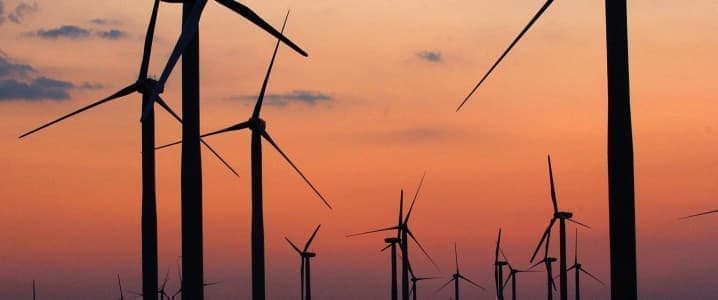In this year’s edition of his letter to Berkshire Hathaway shareholders, Warren Buffett had one more success story to share: the story of Berkshire Hathaway Energy, which this year celebrates 20 years under Berkshire ownership. The clients of the utility also have reason to celebrate: they are paying a lot less for electricity than, say, people in California, and they have been promised frozen rates until 2028. The secret behind the rate freeze and the low prices? Wind power.
“The extraordinary differential between our rates and theirs is largely the result of our huge accomplishments in converting wind into electricity,” Buffett wrote. “In 2021, we expect BHE’s operation to generate about 25.2 million megawatt-hours of electricity (MWh) in Iowa from wind turbines that it both owns and operates. That output will totally cover the annual needs of its Iowa customers, which run to about 24.6 million MWh. In other words, our utility will have attained wind self-sufficiency in the state of Iowa.”
Self-sufficiency in renewables is a dream for many states, but sadly still unattainable. In Iowa, however, it is working. And BH Energy has not even covered all available land with energy storage installations. Acknowledging that wind is an intermittent source of electricity, Buffett further wrote in the letter that BH Energy has backup from outer energy sources—read fossil fuels—but when its wind farms are producing excessive amounts of energy, the utility is selling this to other utilities in other states, reducing their demand for fossil fuels, however temporarily. Related: Here’s Why Oil Prices Should Go Higher
The average electricity rate for the United States was 10.58 cents per kWh last year. When Berkshire Hathaway acquired BH Energy, its customers paid 8.8 cents per kWh and since then, this has been rising by less than 1 percent annually. This means BH Energy customers are paying a little less than the average for the States. It’s not as little as what people are paying for electricity in Texas, Oklahoma or Louisiana, but it is a lot less than what people are paying for electricity in California, Vermont, and New York. And it’s all because of wind power.
Iowa could be a poster state for wind power. It is the biggest primary energy source by nameplate capacity, per 2018 data from the Iowa Utilities Board. At 8.387 GW in capacity, wind accounted for 41.76 percent of the state’s electricity production, or 21.334 million MWh. That’s quite a feat for a renewable energy source. But it wasn’t the biggest source of energy in terms of output.
Coal, although lower in nameplate capacity, produced more electricity than wind in Iowa, at 28.553 million MWh, accounting for 45.05 percent of the total, versus 33.66 percent for wind. This means that despite the good news, wind—and solar, for that matter—have yet to reach parity with fossil fuel power plants in most parts of the United States. And yet, it has already overtaken hydropower. Related: Has U.S. Electricity Lost Its Spark?
The Energy Information Administration reported earlier this year that wind energy output in 2019 for the first time exceeded the output of hydropower plants. This was thanks to an extension of the production tax credit, which motivated a number of new wind installation investment decisions.
In 2019, the U.S. wind power industry recorded its third record-breaking installation year in a row, with new wind capacity hitting 9.14 GW. To date, there are another 44 GW under construction or in advanced development. Total installed wind capacity exceeds 100 GW. Yet if Washington stops extending the production tax credit, this impressive growth in installations will likely slow down substantially, once again highlighting the importance of government support for renewable energy.
Berkshire Hathaway Energy is one of the winners of this support but also of its own strategy. The company owns and operates, besides the wind farms in Iowa and elsewhere, more than 33,000 miles of transmission lines. This means it controls more than just the generation part of the utility business, which makes it more efficient than some of its competitors. Scale and integration are the magic words, it seems, that could help renewable power undermine fossil fuels further.
By Irina Slav for Oilprice.com
More Top Reads From Oilprice.com:
- Oil Price Forecasts Take A Turn For The Worst
- 5 Top Alt-Energy Stocks Storming Wall Street
- Russia: Coronavirus Impact On Oil Is Worse Than Expected



















This verified by a University of Chicago Study by Michael Greenstone and Ishan Nath dated in May 2019 showed that of the 29 states that adopted Renewable Portfolio Standards (RPS) have seen rates go up an average of 17% over states that did not adopt RPS in the past 12 years. This is consistent with what is shown above in the US average only going up 11% over 10 years versus states with high renewable penetration RPS states going up an average of 28% (17% higher than US average).